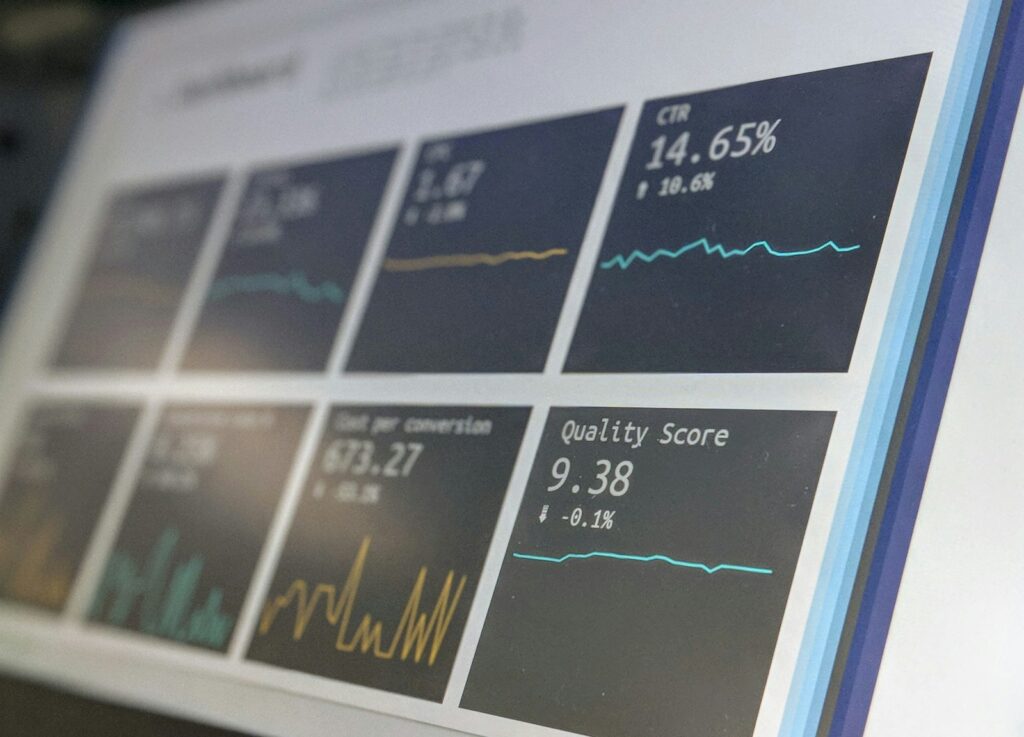Return on Sales (ROS) is a financial performance metric that measures a company’s profitability by dividing its net income by its total revenue. It is also known as the profit margin ratio. This metric is used to determine how much profit a company is making on each dollar of sales. A high ROS indicates that a company is generating a significant amount of profit from its sales, while a low ROS indicates that a company is struggling to make a profit.

Understanding Return on Sales is essential for any business owner or investor. It is a crucial metric that helps to determine a company’s financial health. By analyzing ROS, companies can identify areas where they need to improve their operations and profitability. Investors also use ROS to evaluate the financial performance of a company before making investment decisions.
According to a report by McKinsey & Company, diversification of revenue streams significantly impacts a company’s ROS. The report highlights how companies that strategically expand their product lines or enter new markets can achieve a higher ROS by mitigating risks associated with market volatility. McKinsey’s analysis of the retail industry reveals that businesses adopting omnichannel strategies witnessed a ROS improvement of up to 8% compared to their traditional counterparts.
McKinsey & Company, 2021
Key Takeaways:
- Return on Sales (ROS) is a financial performance metric that measures a company’s profitability by dividing its net income by its total revenue.
- ROS is a crucial metric that helps companies to determine their financial health and identify areas where they need to improve their operations and profitability.
- Investors use ROS to evaluate the financial performance of a company before making investment decisions.
Understanding Return on Sales
Definition
Return on Sales (ROS), also known as Operating Profit Margin, is a financial ratio that measures a company’s profitability by calculating the percentage of revenue left after deducting all operating expenses. ROS is expressed as a percentage and is calculated by dividing a company’s operating income by its net sales.
Importance
ROS is an important financial metric as it provides insight into a company’s ability to generate profits from its operations. A high ROS indicates that a company is efficient in managing its expenses and generating profits, while a low ROS may indicate that a company is facing challenges in controlling its costs or generating enough revenue to cover its expenses. Investors, analysts, and lenders frequently use ROS to assess a company’s financial health and performance.
According to a 2023 report by Deloitte, industries exhibit significant variance in ROS due to differences in operational efficiency and cost structures. For instance, the software industry often reports higher ROS figures, reflecting lower variable costs and scalable revenue models. In contrast, the retail sector operates on thinner margins due to higher cost of goods sold (COGS) and operational expenses.
Deloitte, 2023
Calculation
The formula for calculating ROS is straightforward. ROS = Operating Income / Net Sales. Operating Income is calculated by subtracting all operating expenses from gross profit. Net Sales is the total revenue generated by a company after deducting any discounts, returns, and allowances.
ROS can be calculated for a specific period, such as a quarter or a year, or on a trailing twelve-month (TTM) basis. Comparing ROS across different periods can help identify trends in a company’s profitability and performance. Here is an interactive & simple ROS calculator:
In conclusion, understanding Return on Sales is crucial for evaluating a company’s financial health and performance. ROS provides insight into a company’s ability to generate profits from its operations and is widely used by investors, analysts, and lenders. Calculating ROS is straightforward and involves dividing operating income by net sales.
Factors Influencing Return on Sales

Return on sales (ROS) is a financial ratio that measures a company’s profitability by dividing its net income by its total revenue. A high ROS indicates that a company is generating profits efficiently from its sales. Several factors can influence a company’s ROS, including revenue streams, cost management, and pricing strategies.
Revenue Streams
The revenue streams of a company can significantly impact its ROS. Diversifying revenue streams can help a company generate more revenue and increase its ROS. For example, a company that sells products and services can increase its revenue streams by offering additional services or expanding its product line.
Additionally, identifying and focusing on high-margin products or services can help a company increase its ROS. For example, a company may choose to focus on selling higher-priced products that have a higher profit margin.
Cost Management
Effective cost management is essential for a company to maintain a high ROS. A company that can reduce its costs without sacrificing quality can increase its ROS. One way to reduce costs is to optimize the supply chain by negotiating with suppliers and reducing inventory costs.
Another way to manage costs is to streamline business operations. For example, automating manual processes can reduce labor costs, and implementing energy-efficient technologies can reduce utility costs.
Pricing Strategies
Pricing strategies can also impact a company’s ROS. A company that can price its products or services competitively while maintaining profitability can increase its ROS. One pricing strategy is to offer discounts or promotions to increase sales volume. However, this strategy can also reduce profit margins and decrease ROS.
Another pricing strategy is to implement dynamic pricing, which adjusts prices based on demand. This strategy can help a company maximize profits by charging higher prices during peak demand and lower prices during low demand.
In conclusion, a company’s ROS is influenced by several factors, including revenue streams, cost management, and pricing strategies. By diversifying revenue streams, managing costs effectively, and implementing effective pricing strategies, a company can increase its ROS and generate profits efficiently from its sales.
Analyzing Return on Sales

Return on sales (ROS) is a profitability ratio that measures the percentage of revenue that a company keeps as profit after accounting for all expenses. Analyzing ROS can help businesses identify areas where they can improve their profitability.
Industry Benchmarks
One way to analyze ROS is to compare it to industry benchmarks. Industry benchmarks provide a standard for comparison, allowing businesses to see how they stack up against their competitors. For example, the average ROS for the retail industry is around 2.5%. If a retail business has an ROS of 1.5%, it may indicate that the business is not as profitable as its competitors and may need to make changes to improve profitability.
An analysis of Walmart’s financial performance from 2019 to 2023 demonstrates how external factors, such as the COVID-19 pandemic, influenced ROS. Walmart’s ROS increased from 2.4% in 2019 to 3.1% in 2021, attributed to a surge in demand for essentials and efficient supply chain management, showcasing the importance of adaptability in maintaining profitability.
Walmart Annual Reports, 2019-2023
Trend Analysis
Another way to analyze ROS is to look at trends over time. Trend analysis involves comparing ROS from different periods to see how it has changed. For example, if a business had an ROS of 5% in the previous year and an ROS of 7% in the current year, it may indicate that the business has become more profitable.
Trend analysis can also help businesses identify areas where they need to make improvements. If a business has seen a decline in ROS over time, it may indicate that the business needs to cut costs or increase revenue to improve profitability.
A case study of Tesla, Inc. reveals the effectiveness of operational efficiency improvements. By innovating its manufacturing process and reducing logistics costs, Tesla improved its ROS from -4.5% in 2017 to 6.3% in 2022. This remarkable turnaround illustrates the potential of operational innovations in enhancing profitability.
Tesla, Inc. Annual Report, 2022
In conclusion, analyzing ROS is an important part of measuring business profitability. By comparing ROS to industry benchmarks and analyzing trends over time, businesses can identify areas where they can improve profitability and make changes to increase their bottom line.
Improving Return on Sales

Return on sales (ROS) is a measure of a company’s profitability that shows how much profit a company makes for each dollar of sales. A higher ROS means that a company is more efficient at converting sales into profits. In order to improve ROS, companies can focus on operational efficiency, expense reduction, and sales growth strategies.
Operational Efficiency
Improving operational efficiency can help companies increase their ROS by reducing the cost of goods sold (COGS) and other operating expenses. One way to improve operational efficiency is to streamline production processes and reduce waste. By putting lean manufacturing principles into practice and utilizing technology and automation to maximize production, this is achievable.
Another way to improve operational efficiency is to optimize inventory management. By reducing inventory levels and improving inventory turnover, companies can reduce the cost of carrying inventory and free up cash flow. Utilizing just-in-time (JIT) inventory management systems and putting into place efficient supply chain management procedures can achieve this.
Expense Reduction
Reducing expenses can also help companies improve their ROS. One way to reduce expenses is to negotiate better terms with suppliers and vendors. By negotiating lower prices and better payment terms, companies can reduce the cost of goods sold and improve their bottom line.
Another way to reduce expenses is to implement cost-cutting measures that do not affect the quality of products or services. This can be achieved by reducing overhead costs, such as rent, utilities, and office supplies, and by implementing energy-saving measures and other sustainability initiatives.
Sales Growth Strategies
Finally, companies can improve their ROS by implementing sales growth strategies that increase revenue and improve profit margins. One way to do this is to focus on high-margin products and services that generate more profit per sale. Companies can also increase revenue by expanding into new markets and developing new products and services that meet the needs of their customers.
Another way to improve sales growth is to invest in marketing and advertising campaigns that target the right audience and generate more leads and sales. By using data analytics and other marketing tools, companies can identify the most effective marketing channels and optimize their marketing campaigns for maximum ROI.
Overall, improving ROS requires a combination of operational efficiency, expense reduction, and sales growth strategies. By focusing on these areas, companies can increase their profitability and achieve long-term success.
A study published in the Journal of Business Research (2022) highlights the impact of digital transformation on ROS. Companies that embraced digital technologies for operations and customer engagement saw an average ROS increase of 5% over three years. This underscores the significance of investing in technology to streamline operations and enhance profitability (Smith & Johnson, 2022).
Smith & Johnson, 2022
Frequently Asked Questions
How is the return on sales ratio calculated?
The return on sales ratio, also known as the operating profit margin, is calculated by dividing a company’s operating profit by its net sales revenue. The resulting percentage shows how much profit a company is making for every dollar of sales revenue. The formula is as follows:
Return on Sales Ratio = Operating Profit / Net Sales Revenue
What does the return on sales indicate about a company’s financial health?
The return on sales ratio is a measure of a company’s profitability. It shows how much profit a company is generating from its operations, which is a key indicator of its financial health. A high return on sales ratio indicates that a company is generating a high level of profit from its sales revenue, while a low return on sales ratio indicates the opposite.
How can one use a return on sales calculator effectively?
A return on sales calculator can be used to quickly and easily calculate a company’s return on sales ratio. To use the calculator effectively, one should have accurate information about the company’s operating profit and net sales revenue. The calculator will then provide the return on sales ratio as a percentage.
Return on sales calculator is quite simple and there are many examples online, e.g., you can try this ROS calculator.
Can you provide an example of how to interpret return on sales figures?
For example, if a company has an operating profit of $100,000 and net sales revenue of $1,000,000, its return on sales ratio would be 10% ($100,000 / $1,000,000). This means that for every dollar of sales revenue, the company is generating 10 cents in operating profit.
For example, Apple Inc.’s operating profit in the fiscal year 2022 was $108.9 billion, with net sales of $394.3 billion, resulting in an ROS of approximately 27.6%. This figure significantly exceeds the industry average, highlighting Apple’s superior operational efficiency and market dominance
What distinguishes return on sales from profit margin?
Return on sales and profit margin are both measures of a company’s profitability, but they are calculated differently. Return on sales is calculated by dividing operating profit by net sales revenue, while profit margin is calculated by dividing net income by net sales revenue. Return on sales focuses on a company’s operating profit, while profit margin takes into account all expenses, including taxes and interest.
How does return on sales differ from return on investment (ROI)?
Return on sales measures a company’s profitability in relation to its sales revenue, while return on investment (ROI) measures a company’s profitability in relation to its total investment. ROI takes into account all of the costs associated with a company’s investments, including capital expenditures and working capital. Return on sales is a more focused measure of profitability, while ROI provides a broader view of a company’s financial performance.

